* (restored/expanded)

‘For Dominique Sanda, a French actress apart with such a singular career and that voice, quality ranks over quantity, a fact demonstrates as much by her film choices as her thatre roles. She has worked under the greatest directors, from Robert Bresson, who introduced her to general audiences, to Bertolucci, De Sica, Visconti, John Huston, Jacques Demy, Benoit Jacquot, and many others. Her manner of speaking, along with the depth that radiated from it in each of her appearances, caused the professionals and the audiences to call her, affectionately, “the French Greta Garbo,” or, simply, “La Sanda.” Her rare and fleeting public appearances (she was spotted at the festival of Rochelle a few years ago) have become even rarer since her departure for southern Latin America, where she now lives.
‘After a short time in her youth as a Decorative Arts student, Sanda worked for Dorian Leight: her photos appeared in Glamour, Elle and Vogue. Finally, Robert Bresson, struck by her image and then by her voice, offered her the main role in Une femme douce (A Gentle Woman) from Dostoïevsky’s novel. When she met the director, she felt amazed and seduced by something that attracted her, something that helped her to understand and define herself. Playing the role of a tormented young woman, too beautiful and too gentle to bear everyday banality, fit Dominique so well that she hardly saw the difference between performing and identifying with the character. While actors in Bresson’s movies often fall into oblivion, in this young woman’s case, the film launched her international career and at the same time established her reputation under her new name: Dominique Sanda.
‘She acted in Premier amour (First Love), an adaptation of Tourgueniev’s short story by Maximilian Shell. Shooting the film in Hungary with the director also playing the part of Tourgueniev’s father made the work very hard. Dominique was 17, she was afraid but strongly wanted to succeed. She was used to challenge and never drew back when faced with adversity. She always hoped to find confidence. She was only 18 when Bernardo Bertolucci asked her to play the part of Anna in Il conformista (The Conformist). The young woman started meeting exceptional people, in a country she did not know but would soon love, and where she would play her most important roles. Anna Quadri’s role confirmed she is a great actress and her presence on the screen becomes unquestionable. Quite naturally “la Sanda” was chosen by Vittorio de Sica for the part of Micol in Le jardin des Finzi-Contini (The Garden of the Finzi-Continis). The film would be awarded an Oscar in the USA and until today the public in the whole world identifies Dominique with this character.
‘She had just given birth when she left for Morocco to act in L’Impossible objet (The Impossible Object) with John Frankenheimer. Later on she signed with John Huston for Le piège (The Macintosh Man) and with Fred Haines for Le loup des steppes (Steppenwolf). But the Italians wanted her back. Luchino Visconti offered her a short but dazzling part in Violence et passion (Conversation Piece), where she identified with Luchino’s mother; Bernardo Bertolucci offered her the role of Ada in 1900: once more, an unforgettable professional experience. As Irene in L’Héritage (L’Eredita Ferramonti) directed by Mauro Bolognini, she received the Best Actress Award at Cannes Film Festival in 1976. Liliana Cavani, finding in Dominique the features and mysterious presence of Lou Andréas von Salomé, the most attractive woman of her century, one of Nietzsche’s and Freud’s friends, gave her the leading role in Au-delà du bien et du mal (Beyond Good and Evil). After her reunion with Marguerite Duras for Navire Night, she only acted in France: Le voyage en douce, directed by Michel Deville; Les ailes de la colombe, by Benoît Jacquot, a very beautiful film shot in Venice; Une chambre en ville, by Jacques Demy who had already directed Dominique in her first role for television as Hélène in La naissance du jour, adapted from Colette’s novel.
‘Then came L’indiscrétion by Pierre Larry. In 1983 Dominique took some risks when shooting a film with Lam Lé, a little-known young director. It was the first Vietnamese film made in Vietnam, called Poussière d’empire. She played the part of a French missionary who remained in Asia to continue catechizing at the time when colonial France was collapsing and her fellow countrymen went back to France. As time went by, “la Sanda” acquired more profound and mysterious reflections. This is exactly what was needed to surpass everyone in playing the strange character of the captain’s wife in Le Matelot 512 by René Allio, one of her finest performances. Back again with Benoît Jacquot in Corps et biens (With All Hands) and Les mendiants (The Beggars), two films filled with passion where the characters are haunted by the need of devouring one another. When the Italian cinema crisis started in the late 1980’s, she did not hesitate to act in beautiful TV films: Le train, by Damiano Damiani, where Dominique plays Inès Armand – Lenin’s great love -, “a French political militant of Russian origin, who meets again with V. I. Lenin and Kroupskaia in Geneva and shares with them the well-known journey in the sealed train back to Russia where they will trigger off the revolution”.
‘In 1988 she acted in Guerriers et captives (Warriors and Prisoners) in the immensity of Argentine Patagonia. This was a film based on a tale by Jorge Luis Borges, directed by Edgardo Cozarinski, with Leslie Caron. Lina Wertmuller directed her in Il decimo clandestino (To save nine) and Up to date. She acted together with Burt Lancaster in L’Achile Lauro (Voyage of Terror: The Achile Lauro Affair) directed by Alberto Negrine; with Vittorio Gassman in Tolgo il disturbo directed by Dino Risi; Moshe Mizrahi directed her in Warburg, un homme d’influence. Argentina called her back to play the part of colonial Mexico’s viceroy’s wife in Moi, la pire de toutes (I, the Worst of All), from Octavio Paz’ book Sor Juana (The traps of faith), directed by Maria Luisa Bemberg. She then played in about fifteen films until 2000.’ — collaged
___
Stills

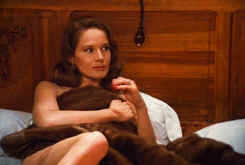




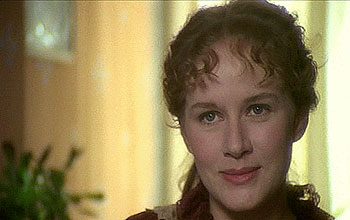







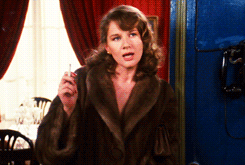






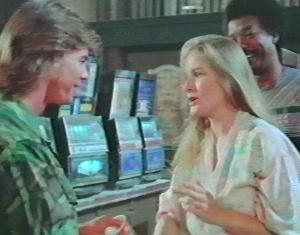






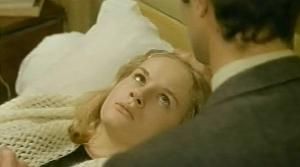

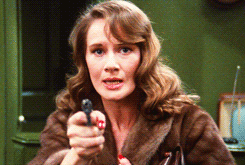










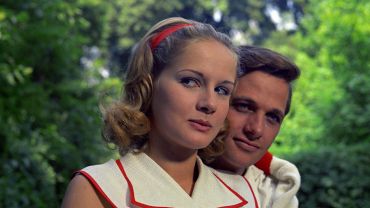




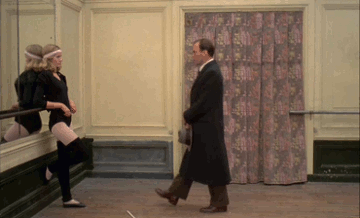

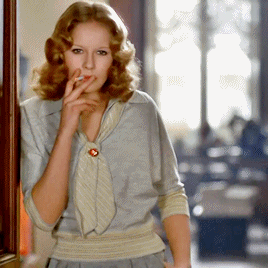


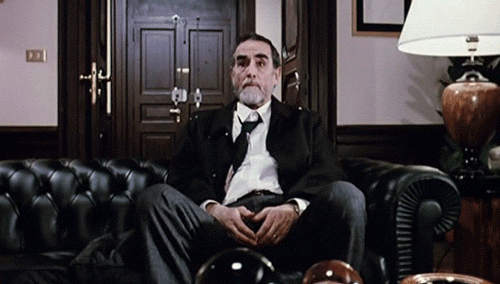
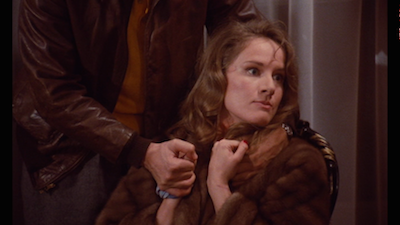
____
Further
Dominique Sanda @ IMDb
Dominique Sanda Website
Dominique Sanda page @ Facebook
‘Dominique Sanda, Coltrane, et Moi’
‘Dominique Sanda, la star atypique’
‘Dominique mystique – 29 Sep 1972’
Dominique Sanda’s films @ MUBI
‘Dominique Sanda la singulière’
‘Charting the style history of an unsung 70s heroine’
___
Extras
DOMINIQUE SANDA : Interview télé française en 1971
Dominique Sanda smoking
ANTHONY QUINN & DOMINIQUE SANDA ‘Nous deux … c’est fini’, parts 1 / 2 (1976)
Dominique Sanda à propos du physique des réalisateurs
Dominique Sanda : “Après Bresson, j’avais peur de continuer”
____
Interview
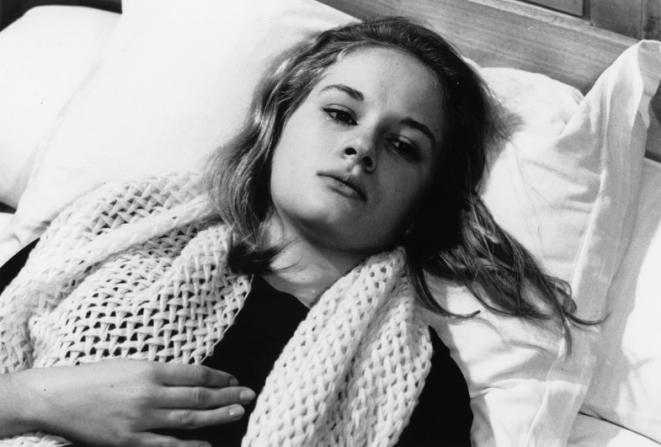
How did Robert Bresson choose you?
I worked in a modeling agency. It was fashionable at the time to look for unknown faces to show them in the cinema. I had been spotted shooting in a film by François Leterrier. The film was not made but, by an assistant, my name and especially my photo portraits arrived until Bresson, who was looking for an interesting face and who would have said while seeing mine, “Yes, here he is.”
What memory do you have of him?
Immediately, between him and me, it was a gaiety and a freshness that did not stop then. He asked to see my wardrobe to dress his character. I felt very comfortable all the time. I know that around Bresson there reigns a lot of more or less legendary reputations, of harshness, intransigence, and so on. As for my experience, I will only say one word: requirement. I keep the image of a handsome man, with an artist’s head. Very elegant with velvet trousers and blue shetlands. He inspired the technicians with fear. He had his rules, something I would call “retailer”. I felt interpreter, actress, model, as you want. I listened to him, I tried to satisfy him and I thought that everything I did for him made sense. I found my place with the feeling that it suited him. I believe that, without having the full consciousness, I was made to be filmed. Once I was there, I wanted to be good, that is to say, a good actress. I was told, legend or truth, that Bresson chose me for my voice over the phone. I was excited to hear that. Our relationship may also be related to my state of the day. I was 16 and I never thought I wanted to be an actress. I was there, without any particular ambition, except that of not going out into the very futile world of fashion. That said, as soon as I read the script (with my parents), I identified with this sweet woman, even if each one of us, marvel of wonders, is different. No doubt, this experience had the effect of a small seed planted at the right place at the right time. Bresson has awakened in me a deep actress fiber. It’s one of those times when things come together harmoniously. Starting a career with Bresson could not be better.
How did you react when you saw the movie?
There was no question of seeing rushes during the shoot. I discovered the film during its premiere in a cinema on the Champs-Elysées. I watched him calmly. Everything was faithful to what I had stored and imagined. My parents were a little relieved to see that my career started like this. But it’s not easy to get out of there, even if I came out bigger and stronger.
How did you live this post-Bresson?
I missed movies like missing a train. It’s irreversible. But we are also built on regrets. Life, in itself, is intense. Sometimes, we want to dedicate it to many other things.
How does Bernardo Bertolucci come into your life?
Late, as usual … He was coming from Rome, with his cousin Giovanni who was a producer. Bernardo had seen me in A sweet woman, and he wanted me in The Conformist. Then arrived very quickly the Garden of Finzi-Contini, Vittorio de Sica. So began for me, what I call “my trip to Italy”, in the manner of poets or writers of the nineteenth century. There is in this country an ease, a heat at the corner of the street, which makes me light as a feather. I loved talking Italian, even though I was postsynchronized as was the custom at the time in all the movies shot there. It’s a shame, because my voice can not be confused, and sometimes today, I’m recognized simply by hearing my voice. In Argentina where I live since 2000 with my husband, I found this Italian note, mixture of simplicity and gaiety.
Why are you so rare at the cinema?
I always knew how to shoot the little thread of life and felt what suited me. I do not feel obliged to appear all the time, to follow the same things, to be caught in a monotonous joke. In Argentina, I live my life as an actress, especially at the theater where I played Ibsen and Shakespeare in Spanish. Playing in the theater, among other things at the prestigious Colón theater in Buenos Aires, is to be part of the village, to be rooted in this country. I have a natural propensity to fly, to be very quickly out of the shot. I also want to live and not just be an actress.
______________
19 of Dominique Sanda’s 57 roles
_____________
Robert Bresson Une Femme douce (1969)
‘Based on a story by Dostoevsky (Bresson’s next film, Four Nights of a Dreamer, would also be a Dostoevsky adaptation), Une Femme Douce was Bresson’s first film in colour, and marked the stand-out screen debut of model Dominique Sanda, a Bresson non-pro who went on to have a major career in European cinema (including leading roles in Bertolucci’s The Conformist and 1900). A troubling, told-in-flashback tale of the failure of love and the walls that separate us, the film concerns a materialistic Parisian pawnbroker struggling to understand why his free-spirited young wife — the “gentle creature” of the title, played by Sanda — committed suicide for no apparent reason (suicide becomes an increasingly prevalent theme in Bresson’s later work). Bresson’s use of colour is characteristically expert — “a masterful composition almost entirely in tones of blue and green” (Richard Roud). This haunting, poetic, and mysterious work is often cited as the director’s most sensual and secular film. “Colour in no way lessened his ability to create a totally personal vision… The progress of the couple’s relationship is beautifully captured without recourse to psychological ‘explanations’” (Roy Armes). “Une Femme Douce belongs among the greater Bresson films” (Roger Greenspun, New York Times).’ — The Cinematheque
Excerpt
Excerpt
______________
Bernardo Bertolucci The Conformist (1970)
‘Bernardo Bertolucci’s expressionist masterpiece of 1970, The Conformist, is the movie that plugs postwar Italian cinema firmly and directly into the emerging 1970s renaissance in Hollywood film-making. Its account of the neuroses and self-loathing of a sexually confused would-be fascist (Jean-Louis Trintignant) aching to fit in in 1938 Rome, who is despatched to Paris to murder his former, anti-fascist college professor, was deemed an instant classic on release. It was, and is, a highly self-conscious and stylistically venturesome pinnacle of late modernism, drawing from the full range of recent Italian movie history: a little neo-neorealism, a lot of stark and blinding Antonioni-style mise-en-scène, some moments redolent of Fellini. And it was all framed within an evocation of the frivolous fascist-era film-making style derided by Bertolucci’s generation as “white telephone” cinema. Add a dose of unhealthy sexual confusion and it’s hardly surprising that it was one of the international hits of the year. It also offered the blueprint for the new wave of Hollywood film-makers to a different kind of cinema and a roadmap of new formal possibilities – not merely for those of Italian descent such as Francis Coppola and Martin Scorsese.’ — The Guardian
Trailer
Excerpt
______________
Maximilian Schell First Love (1970)
‘Based on Ivan Turgeyev’s novella, Erste Liebe is about two young lovers in czarist Russia. One is a 21-year-old woman, the other a young man of sixteen. Things take a tragic turn as the girl (Dominique Sanda as Sanaida) falls in love with the boy’s father (Maximilian Schell). Directed by Schell, this film was nominated for Best Foreign Language Film in 1970’s Academy Awards.’ — Movieweb
Excerpt
the entire film (in German)
_____________
Vittorio de Sica The Garden of the Finzi-Continis (1970)
‘If you stumbled unawares across The Garden of the Finzi-Continis, an airily sumptuous period romance tackling Italy’s political climate in 1938, it would be easy to hazard a couple of wrong guesses about who made it. You might plump first for Luchino Visconti, whose 1963 film of Lampedusa’s The Leopard it resembles in doomed glamour and depth of melancholy, but he was busy on Death in Venice (1971). Perhaps you’d go for Bernardo Bertolucci, but he would have been working on his own shattering fascist parable, The Conformist. Bertolucci’s one has a fair bit in common with this – both of them star Dominique Sanda as an unattainable temptress, and both competed for Best Adapted Screenplay at the 1971 Oscars, where The Garden of the Finzi-Continis won Best Foreign Film. In fact, the director is Vittorio De Sica, whose penultimate movie it was. Thanks to the likes of Bicycle Thieves (1948) and Umberto D (1952), the one–line verdict on De Sica is probably “friend of the poor, godfather of neo–realism”, and rightly so. This film is proof, though, that his social conscience looked beyond wealth. It’s about a great Jewish family destroyed by Mussolini’s anti–semitism. The Finzi Contini story is a vision of carefree luxury about to be snatched away.’ — Tim Robey
Trailer
______________
Philippe Labro Without Apparent Motive (1971)
‘This hard-boiled French crime thriller begins with the bold murder of a well-heeled Frenchman. The detective assigned to the case is most puzzled for there seems to be no motive. Then a old man and an astrologer are killed in exactly the same way, leaving the detective to figure out how the three disparate victims are linked. All he has to go on is a mysterious diary given to him by the step daughter of the first victim. Despite the film’s noir-ish content, director Philippe Labro chose to film it in gay, sunny Nice, a technique that actually enhances the grimness of the suspenseful story.’ — modcinema
Excerpt
“sans mobile apparent” screenshot game
______________
John Huston The MacKintosh Man (1973)
‘From the title of this John Huston movie, The Mackintosh Man, I was half-expecting to see star Paul Newman – oddly cast as a British secret agent – dressed in a Bogart-style raincoat and wandering through grey, damp streets. However, as soon as I saw the film’s glorious Technicolor sunshine, I realised the title had nothing to do with raincoats. In fact the film’s title is drawn from the name of Newman’s boss in the film, played by Harry Andrews – and the film itself is a lavishly-produced 1970s thriller moving from London to Ireland to Malta. (For a fan of The Maltese Falcon, it’s nice to know that Huston actually made a film in Malta!) I’ve seen some reviews suggest that this movie is Huston’s homage to Hitchcock, and I can see that there are some similarities, with the puzzling plot and the casting of Dominique Sanda as the enigmatic “ice blonde” heroine, “Mrs Smith” – but for me the tension never really builds up to Hitchcock levels.’ — Movie Classics
Trailer
______________
Luchino Visconti Conversation Piece (1974)
‘Luchino Visconti’s second-to-last film, Conversation Piece (Gruppo di famiglia in un interno) is a sure-handed, character-driven chamber drama that may not reach the sumptuous, melodramatic heights of Visconti’s best-known work, but certainly comes from the hand of the same probing filmmaker. At the film’s center is Burt Lancaster, playing a wealthy, retired, unnamed professor cloistered in his massive Roman palace, surrounded by art and books. A decade after playing the aristocrat in Visconti’s The Leopard, Lancaster here is a man whose life has nearly been mummified — we never see him leave the palace, his memories of his late wife and mother (Claudia Cardinale and Dominique Sanda in uncredited roles) are one of his chief preoccupations and he’s become wholly passive.’ — Cinema Sentries
Trailer
______________
Fred Haines Steppenwolf (1974)
‘The choice to focus on special effects rather than plot to build the climax causes Steppenwolf to end on a flat note, a fact that’s not helped because the movie, like the novel, ends abruptly. It’s likely Haines hoped that his ending would call to mind the mindbending climax of 2001: A Space Odyssey, but Steppenwolf lacks the quiet control and clean lines of Kubrick’s masterpiece, failing to evoke the same sort of awe. (Of course, few climaxes could). Steppenwolf failed to pack the drug crowd into the theaters in 1974, and its unlikely to satisfy those today who are looking for nothing more than an acid trip on film. But fans of the novel who want to see a faithful recreation of a book that was once considered unfilmable are likely to be pleased by what they see; or at least, not totally bummed out.’ — Weird Movies
Trailer
Excerpt
______________
Philippe Garrel Le berceau de cristal (1976)
‘Le Berceau de cristal (The Crystal Cradle) is typical of the ghostly, threadbare silent films Garrel made during the 1970s. These films have a strange, ambivalent relationship to narrative, seeming to offer tiny fragments of a (wordless) storyline, but mainly functioning as documents of Garrel’s friends and lovers. As a result, they have a curious intimacy that borders on invasiveness, forming a world which scholar Alain Philippon has described as “hermetic and rarefied.” Nico is the central figure here, emerging languorously from the dark enclosure of a clamshell bed, playing her harmonium, pensively pouring over her poetry (which we hear her read in voiceover), and toking on a one-hitter. While she is portrayed mainly in shadow, her pale jutting cheekbones suggesting a death’s head, the other figures are more assertive, gazing back at and playing with the camera. Dominique Sanda, posing as a diaphanous-gowned Pre-Raphaelite wood-nymph in a leafy arbor, smiles back at us with equal parts serenity and seduction. Anita Pallenberg gives the camera a lusty grin as she snorts coke off the back of her hand and munches on a couple of pot leaves. Even Garrel himself appears, though he’s predictably less ebullient: festooned in dark velvets and a mop of hair, he’s glimpsed brooding intensely in the reflections of a shattered mirror.’ — BAM
Excerpt
_______________
Bernardo Bertolucci 1900 (1976)
‘The great battle of 1900 has ended in cease-fire and compromise. It’s director, Bernardo Bertolucci, previously refused to allow more than a trim for his five-and-a-half-hour epic of Italian history from 1900-1946. Yet 1900 weighed in at four hours and five minutes for the recent New York Film Festival; and Bertolucci, in Manhattan for the American debut, claims to like the film better this way. “When I finished the movie I said I couldn’t cut one frame,” the English-speaking filmmaker explains, when interviewed, of his clash with producer Alberto Grimaldi. “But later I saw that the movie could be cut. Instead of a castration, I arrived at an artistic work. What we have now is the film I want.” What was deleted? “My friends in Italy couldn’t even tell me. I didn’t remove any sequences. I cut short pieces of film. The difference is only in the rhythm. The meaning, the strength, is absolutely the same.”‘ — Gerald Peary
Excerpt
Bertolucci directs Dominique Sanda with Robert De Niro
______________
Jack Smight Damnation Alley (1977)
‘As the action takes place in a post-apocalyptic world that is evoked through desert locations and superimposed radioactive skies, Damnation Alley could be generously described as a decent B-movie if it were the product of American International Pictures or New World. However, this was actually a 20th Century Fox production that carried the hefty price-tag of $17 million and was intended to be a summer blockbuster. Unfortunately, production delays caused by the inability of the special effects team to successfully realise mutated insect life resulted in the planned 1976 release being postponed to 1977. During this time, another Fox science-fiction project by the name of Star Wars (1977) opened to phenomenal business, making the desert-bound heroics of Damnation Alley immediately obsolete when compared to the saga of a galaxy far, far away.’ — Electric Sheep Magazine
the entire film
________________
Liliana Cavani Beyond Good and Evil (1977)
‘Beyond Good and Evil (Italian: Al di là del bene e del male, UK title: Beyond Evil) is a 1977 drama film directed by Liliana Cavani. It stars Dominique Sanda, Erland Josephson and Robert Powell. The film follows the intense relationship formed in the 1880s between Friedrich Nietzsche, Lou Salomé and Paul Rée. This is the second part of “The German Trilogy” directed by Liliana Cavani. In The Night Porter she portrayed the connection between perversion and fascism. This time she depicts the life of Friedrich Nietzsche, a German philosopher who wrote Thus Spoke Zarathustra and Beyond Good and Evil.’ — collaged
Excerpt
_____________
Frank Cassenti The Song of Roland (1978)
‘First of all, La chanson de Roland starring Klaus Kinski and Dominique Sanda is a great film. But, unfortunately, it’s quite an unknown one. Unlike other “medieval” films (e.g. Anthony Mann’s El Cid) there’s no “sword-battle-american-pulp-shit” stuff, but a hard intellectual effort in order to offer us a realistic version of the European Middle Ages. And also an extraordinary respect for the text it is based on, which proves that there’s an exact point between plain translation into images and “commercial” or “updating” stupidness (but you must be clever enough to find it!). The director seems to know this ancient French literary masterpiece as deeply as sir Lawrence Olivier knew Shakespeare’s greatest plays. Last but not least, Kinski is superb, either as the poor “jongleur” who’s traveling to Santiago de Compostela with his mates, or Roland, the hero from the story he tells during their pilgrimage. I’d recommend this film to any viewer, and specially to teachers who’d like to find an easy, powerful way to show their students how “different” and fascinating the Middle Ages can be.’ — puteolum
Excerpt
______________
Marguerite Duras Le navire night (1979)
‘Ever the iconoclast, Duras proffers two lovers who never meet face to face. Dominique Sanda plays a woman with tragic reasons for keeping her paramour (Mathieu Carrière) at a distance, confining their affair to phone calls initiated by her—a Durasian construct, language detached from images. The director invites us to share their frustrations by limiting our contact with the stars, sequestering them in dark rooms and cutting to empty streets as their words take on lives of their own. Featuring the voices of Duras and protégé Benoît Jacquot.’ — FSLC
Excerpt
______________
Michel Deville Le voyage en douce (1980)
‘Released outside of France as Travels on the Sky, Voyage en Douce stars Dominique Sanda and Geraldine Chaplin as sisters. Both ladies are married, though Chaplin has just left her husband. Insecure about this move, Chaplin joins the self-reliant Sanda for a weekend vacation in the south of France, where the two siblings carry on a long discussion about male-female relationships. By the time Monday rolls around, the previously indecisive Chaplin emerges as the more resilient of the two sisters. Voyage en Douce director Michel Deville prevailed upon 15 famous French writers to contribute anecdotes concerning their sexual experiences; the most powerful (and best staged) was the story of a rape–a story contributed anonymously.’ — The Cave of Forgotten Films
Trailer
Excerpt
______________
Jacques Demy Une chambre en ville (1982)
‘It’s widely held that the first four features made by Jacques Demy—Lola (1961), Bay of Angels (1963), The Umbrellas of Cherbourg (1964), and The Young Girls of Rochefort (1967)—are by far his best, and that his career thereafter went into creative decline. True, some of us have long argued that Model Shop (1969) should be added to that list of initial gems, and in recent years, particularly since it was restored, that film has undergone a welcome critical reevaluation. And then there’s Donkey Skin (1970), a huge hit and a much-discussed cultural phenomenon in France. But for most people, that’s it: the consensus is that, for Demy the artist, it was all downhill from there. That’s because very few people have actually seen Une chambre en ville (1982), a late-ish masterpiece that, for this writer at least (and I’m certainly not alone in my opinion), is the equal of any film Demy made. It’s easy to see why Une chambre en ville has remained so unfairly neglected. The film—coming as it did at the end of a decade-long fallow period for Demy, with the eccentric Lady Oscar (1979) and a good if unremarkable 1980 TV movie of Colette’s La naissance du jour its immediate predecessors—was a box-office flop. Though he had previously attained improbable success with all-sung films—Umbrellas and Donkey Skin, both starring Catherine Deneuve, had been big hits—perhaps that highly artificial style seemed inappropriate for the story of a doomed love affair taking place during a dockers’ strike in fifties Nantes; or perhaps it just didn’t come across as sufficiently “cool” for audiences who’d been flocking to films by the likes of Jean-Jacques Annaud and Jean-Jacques Beineix. Its failure certainly wasn’t due to a lack of critical support; indeed, to the annoyance of some film folk (Jean-Paul Belmondo included) whose movies were released at the same time, a large group of French critics loudly proclaimed their support for Une chambre after its poor opening by taking out an advertisement in Le monde that exhorted readers to see it before it vanished from the cinemas. Alas, the initiative had little discernible effect.’ — Geoff Andrew
Trailer
Excerpt
______________
Amos Gitai Birth of a Golem (1991)
‘Birth of a Golem movie was released May 30, 2003 by the Facets Multi-Media, Inc. studio. Amos Gitai (KIPPUR, KADOSH) ruminates on the magical elements of cinema in this meditative parable. Birth of a Golem movie Using the myth of the Golem, a giant stone statue that comes to life, Gitai examines filmmaking and the marvelous wonder involved in the process of filmmaking. Birth of a Golem video Annie Lennox is featured as are international film figures such as actress Dominique Sanda (THE CONFORMIST), screenwriter Tonino Guerra (ULYSSES’ GAZE), and director of photography Henri Alekan (WINGS OF DESIRE). This totally original dreamlike film “notebook” features Annie Lennox of the Eurythmics in an imginative exploration of the Golem myth Birth of a Golem film. The myth of the statue made of clay that comes to life becomes a parable about the art of filmmaking and the creative process.’ — collaged
Excerpt
_______________
Marco Bechis Garage Olimpo (1999)
‘Garage Olimpo is the kind of valuable cultural product that symbolises political regeneration…himself a victim of the country’s regime – he was forced to leave Argentina in 1977, at the age of 20, for political reasons – director Marco Bechis has the necessary moral authority to make this film. It is director Marco Bechis’ softly-softly approach which fills each frame with real power and leaves you in no doubt as to his commitment and passion. It is indeed no surprise to learn that this Italian-Chilean was himself snatched by the military in Buenos Aires and tortured. Yet, despite his admirable insistence on moving us with the truth (helped by his grainy camera work), Bechis can also tell a tale and he gradually incorporates a race-against-time element. Will Maria escape, especially when she is taken out on the town by her captor? Let’s just say that the answer would be alien to Hollywood.’ — collaged
Excerpt
_______________
Bertrand Bonello Saint Laurent (2014)
‘The life of acclaimed fashion designer Yves Saint Laurent during the peak of his career, from 1967 to 1976. Saint Laurent was responsible for creating many trends, like the tuxedo suit for women in 1966. His glory years are highlighted as well as the struggle that came along with them, including his past in the military and his connection with fashion house Dior. The stress and anxiety from having to create so many fashion shows per year finds the designer turning to alcohol, cigarettes and drugs, resulting in deteriorating health and breakdowns as he enters a very dark time in his life. The legendary French actress Dominique Sanda gives a rare recent performance as the designer’s mother.’ — collaged
Trailer
*
p.s. Hey. ** Jamie, Hey, hey! Man, it’s good to see you! I was worried that your health had done another number on you, and it sounds even worse than I’d worried about. Jesus, buddy. I mean … I know that happens, and not infrequently, that the docs can’t pinpoint a problem even with face-fulls of symptoms, but it’s so strange. It’s like in school when you realise your history teacher isn’t the ultimate expert about history, but much worse. I’m so sorry for the ordeal and for whatever mystery-related worries and daydreams you have to deal with now. Are you rebuilding yourself, I hope? My day? The temperature here suddenly shot up yesterday and unloaded a staggering amount of pollen. I’m usually okay with that, but my facial features were like whatever’s behind a waterfall. I started back to work on the TV script. Most of Zac’s and my new film takes place at one house/yard, and I drew out a rough map of the layout of the house and property to help us work on the script revisions. But mostly my head leaked unpleasantly. How was your day? Can you work? What does ‘day’ mean to you at the moment? Pilloried love, Dennis. ** Chris Cochrane, Hey, bud. Me too, big time, that a ‘Them’ solution was reached without too much trouble. Well, you can’t see ‘PGL’ yet because it’s being slowly rolled out via film festivals, but ‘LCTG’ is on DVD and is streaming, so you can watch that one if you want. I had a coffee with Rico the other day when he was quickly passing through Paris on his way to Dijon where he’s appearing in someone’s new opera, and that was very nice, and he told me to say hi to you when you and I next crossed paths, which is today. Love, me. ** David Ehrenstein, Ah, I’ll see if I can find a France-friendly clip of that. Morrissey’s deep end stretches back many years now. That doc does look delicious. Thank you! Everyone, Mr. E has discovered and generously passed along a documentary film on Jerry Torre of ‘Grey Gardens’ renown. It looks like a total must. It’s called ‘The Marble Faun of Grey Gardens’, and you can watch it here. ** Bernard, Hey, Bernard. Gentle, strategically placed hug to Arthur. Everyone, Does anyone here live near Chicago? Bernard Welt wants to know. Give a shout if you qualify. Thanks. I don’t suppose you could characterise what ‘new kind of stuff’ means exactly? I doubt I could were I you, but I am not you, you who has an infinitely greater grasp of non-fictional writing/speaking than I. ‘Sentimental’ makes me very curious. So happy your Black Mountain piece met with such acclaim. Imagine that becoming shrug-producing second nature and hit that pad and pen. That group project sounds really interesting even in that tidbit of a characterisation. Cool. And that stuff you’re working on for Asheville sounds similarly very alluring both because it’s your mind setting it out and because I know absolutely nothing about the topic. You’re good, you’re productive and busy, and I feel kinship. ** James Nulick, Hi, James. Um, no, I don’t think an internal grab for a title is problematic in the slightest. Well, the thing to remember is that a script isn’t the final work. It’s just the map. Really, you have to count the casting, location choosing, rehearsals, shooting, and editing in the mix of how long the thing takes. Finishing the script is sort of like just finishing a treatment in a way. Of course I feel like what I’m working on is a total failure at some or different points. Almost always. Goes with caring and believing. It’ll pass. It’s part of the deal, and, ultimately, it’s an important part. I think, US-wise, ‘Kindertotenlieder’ has only played in NYC. Sadly for me, there are people with a Cooper aversion who are in positions of power everywhere. For recent example, there have been three times so far where ‘PGL’ was almost accepted into really good film festivals and only wasn’t because one person on the committee hates what I do and wouldn’t allow a film I partly made make to it through. ** Steve Erickson, Hi. How’s your misbehaving computer today? Like I said, McKamey Manor has made absolutely no bones about its extremity, danger, sadism since the moment it was born. No other haunted attraction in history has received even a teeny degree of the publicity, buzz, talk, etc. that McKamey has. Anyone who pays to go through it knows what they’re potentially in for. It’s basically impossible that they wouldn’t know and similarly basically impossible that they didn’t think it was a challenge they could face. Whining about it afterwards, with and without exaggeration, is people’s right, obviously, but trying to bring a lawsuit against the place is just hypocritical and greedy, if you ask me. ** Alex rose, Hi, Alex! It’s strange, yeah. I mean I knew he was dead when I made the post, but I nonetheless thought, ‘Those look like photos of someone who died’ when I gathered them. Spooky. I met him once because we were both Grove Press authors, and I didn’t get that eerie, doomed vibe from him in the flesh. I have not read that Dukahz book. Someone made a guest-post about him for the blog a billion years ago, and I think I’ve only read the excerpts in that post. Yeah, I think I’ve always thought his stuff would be too Uranian for me, but now you’ve piqued me big time. Huh. I’ll try to hunt that. Thanks, maestro of maestros. Oh, I just read somewhere yesterday that Cork has evolved into the unofficial culinary capitol of Ireland? Bunch of love to you. ** Dóra Grőber, Hi! I hope the book festival is surprisingly fun and interesting. I think I like book festivals, at least in theory — people going out of their way to gather because of books and for no other reason. Especially ones in the US because such a small portion of the population there reads books. Or I guess I mean reads fiction books or nonfiction books that aren’t about improving your health or Trump. I laid out most of my yesterday to Jamie up above. The producer thing is, yeah, whine-producing. She sent her edit finally, It, in and of itself, isn’t so bad. It’s more her general instructions and attitude that we’re a bunch of wild, undisciplined artists who don’t know what we’re doing when we know what we’re doing rather meticulously. Like she said TV comedies — and our show is too strange to be a full-fledged comedy although it is pretty comedic — always must have at least 55 scenes, and ours has 29 scenes, so we should flesh it out with a bunch of flab to get up to 55 scenes. Maybe ARTE will say the same thing, but we really doubt that, and it just seems like she’s asking us to make the show as conventional as possible, which we won’t do, and it’s just annoying. Blah blah. But yesterday was okay and ended without disaster, so that’s good. Were you still mostly prepping for the festival today? Did you manage to find some charisma in the day? ** _Black_Acrylic, Hi, Ben. Very glad it interested you. That ‘Drunken Baker’ thing looks extremely interesting. I’ve never heard of it. And Leckey doing a related installation is only an added lure. Thanks, man. ** Jeff J, Hi, Jeff. Yeah, I would definitely start with ‘Lord of the Barnyard’. It’s the best one by far. The second one is the weakest. The third one is very odd, uneven, but quite curious. I think subconsciously we’ve been keeping our eyes on the potential cost of the new film, but it hasn’t been a parameter we’re actively trying to stay within. But, yes, we want to make films that we can realistically make, and, luckily, we’re not at all interested in things that would bloat the budget like having name actors or CGI or exotic settings or elaborate car chases and so forth. Continuing love and possible magic powers re: your cat. So nice — that final checking and reading of the final layout. I love that part. Cool, man. ** Misanthrope, Me too, like I said. Unless it’s Bresson or GbV or … I don’t know … recent Terrence Malick where I have to fight a deeply rooted desire to behead people who don’t like them, ha ha. ** Nik, Hi, man right back to you! Thanks about the producer. I mean we like the script a lot. It needs work, and we know we’re going to have compromise more than we want to, but we like it enough to battle on its behalf as far as we can. If you skip, ‘Barnyard’, go straight to ‘Kornwolf’. ‘Fiddle’ is the weakest one. Oh, very interesting about your shift from acting in to writing for. Dude, Bard, that’s a great acceptance! Congrats on that whether you end up there or not. My buddy and collaborator Zac went to Northwestern. I think he was happy there, but he was in the fine arts department. Have a swell day. ** Okay. For some reason I decided to restore and slightly update my until-recently dead Dominique Sanda Day. Hope you enjoy. See you tomorrow.




 Now available in North America
Now available in North America 
Dominique Sanda is a GODDESS!!!!
In an interview she gave to “Interview” a number of years back she said bresson was quite upset that his former “model” had become one of the biggest stars of world cinema. he used to call her up just to hear the sound of her voice — a practice she found rather annoying.
“Un Chambre en Ville” is my favorite of all of Jacques’s films. A shame it’s not better known. Like “The Umbrellas of Cherbourg” it was based on a true story, and many ideas in it — particularly the crowd of singing strikers that open the film — were ripped off by “Les Miserables”
More about Jerry Torre
Here’s Johnny Hartman singing the song we hear a music-only snatch of at the start of “Grey Gardens”
I am trying to get my plans together for shooting CULTURE SHOCK together. I exchanged several lengthy E-mails with the actor I’ve cast last night, and I plan to give him a phone call Sunday morning to discuss this further. One thing he brought up was whether the likely audience for the film will be turned off by a heterosexual actor playing a gay character. It’s really depressing to me that this would even be an issue to the point where an actor would bring it up. I told him that at the level where I’m working, probably no one will care and I don’t think the film will be seen by an entirely gay audience. Once his participation is written in stone, I will start looking for a location, a sound person and a P.A.
If he’s cute no one should care.
I didn’t find anything wrong with Armie Hammer and Timothee Chalamet in “Call Me By Your Name” as they were both eminently fuckable.
He’s reasonably handsome, but he’s 51, and his looks are more akin to Michael Stuhlbarg than Hammer or Chalamet. I don’t think many people will be describing him as “eminently fuckable” (a word I hate) unless they’re into middle-aged Jewish men. He does have a remarkable ability to change his appearance from role to role, and in fact I looked over 100 stills and headshots of him before making a final decision (I also watched 4 shorts he acted in), finding one that made me say “Yes, that’s exactly how I want the character to look!” I’ve told him that, and he says he can copy the look and wardrobe.
Hey Dennis!
It’s lovely to be back!
Your history teacher analogy made me lol. Exactly! And I can’t even get pissy about anything – I’ve been so well looked after and had so many tests done, plus many more to come. My consultant seems to think an MRI scan is going to give us the big reveal. We shall see. I’m tentatively getting better and better, but every time I say that it all goes tits up.
I feel you on the hay fever front, man. Hope you’ve got yourself some good antihistamines or the pollen count’s substantially diminished. I wonder if it’s late tree pollen?
Great that you were drawing a map of your potential set. I love that kind of thing. Makes me think of writing comic scripts for artists and drawing lots of little maps to see just how things were going to play out on the ‘sets’. How’s that TV script going? I noticed that you said something elsewhere about a producer asking for 55 scenes. Over how many episodes or over what length of time do they want that? I’m intrigued about these machinations, even those dubious things cooked up by pros as ‘industry standards’.
Before today I wasn’t aware of Dominique Sanda, so thanks for that. She has a face that takes a lot of looking at, I think. I really want to see Une Femme Douce.
My days of late have involved a lot of lying around staring into space and feeling shitty, tbh, and for a while I wasn’t even into reading or watching stuff, but that’s all getting better and I’m having lazy days of reading and movies. Really enjoying superhero comics. And I’m reading A Voice Through A Cloud atm and it’s absolutely delightful, so ta for that tip. I started it in hospital and it was a wee bit close to the bone, but oh man, it’s a beautiful read.
How was Thursday?
Love on an escalator,
Jamie
Hi!
Yes, yes! I have the same feeling about book festivals. Even if I’m not interested in most of the “popular” books on sale, it’s nice to know that so many people like to read and actually find books worthy of their money. And of course, there are always some unexpected little gifts.
Christ. It must be such a horrible burden to work with someone who feels compelled to follow norms at all times – especially when it comes to art. I honestly doubt ARTE would’ve started working with you if they wanted something conventional. What happens if you refuse to flesh the script out?
I had a calmer day than the previous ones because the festival started today and everything’s out there now, all the boxes and tons of books. (We checked and I boxed over a thousand books.) I also couldn’t fully concentrate on whatever I was doing in the shop because I’m rapidly sinking to the deepest bottom of one of my obsessive phases again. This time I can’t get enough of this very young drag queen, Aquaria. I don’t know if you’re into drag but she’s definitely a complete muse, as if I saw the embodiment of what lives inside my head. These are probably not the most glorious moments of her otherwise amazing drag but I love trashy club videos like these the best. I find them endlessly inspiring. https://www.youtube.com/watch?v=KLTMxybosqg AND https://www.youtube.com/watch?v=5kBUHIAulCs
How was the day on your end, Dennis? I do hope you’re allergy is going away as quickly as it attacked you!!
I don’t think I’ll have the brain capacity to compose a coherent letter after the festival tomorrow so I’ll be back during the weekend!
I had really awful allergies for about 2 weeks when spring began – I would wake up feeling like I was drowning in phlegm and spend the first 2 hours of my day coughing and sneezing – but they got much better once April rolled around. I hope yours are very temporary. Do you use Flonase nasal spray? The brand name might be different in France, but in America it’s available over the counter.
Here’s my quite brief review of Andrew Haigh’s LEAN ON PETE for the Nashville Scene: https://www.nashvillescene.com/arts-culture/film/article/21001057/lean-on-pete-explores-western-tropes-with-a-skillful-eye
Dennis do you know this movie? How has it been received in France? Lucas Belvaux was discovered by Rivette and starred in his version of “Wuthering Heights”
Une Femme Douce on DVD seems really difficult to get a hold of, in the UK anyway. There’s a few Bresson films like that, don’t know if it was just some dodgy contracts got signed at the time but I’m desperate to see this for myself somehow.
Dennis, Well, hahaha, I understand you re: the beheading urge. While I really do find people’s disagreeing with me about certain artists to be interesting, there are times when I just have to bite my tongue and then think about it later when the emotion of disappointment/anger has passed. For example, Suede. Somebody doesn’t like them, yeah, I just don’t say anything and think about it later.
Soooo…do you have any idea re: your dates for NYC? I guess I should start planning soon myself.
Oh, and anyone else seeing all these weird links at the top of the page here?
Oh, and when you search for the blog on Google, it comes up first and with a note that says, “This site may be hacked.” What the fuck is that?
Dennis,
“A little thread of life.” she says in the interview. I like that idea. Hope you’re well. I’m writing and preparing to starve in my jobless summer.
understand you re